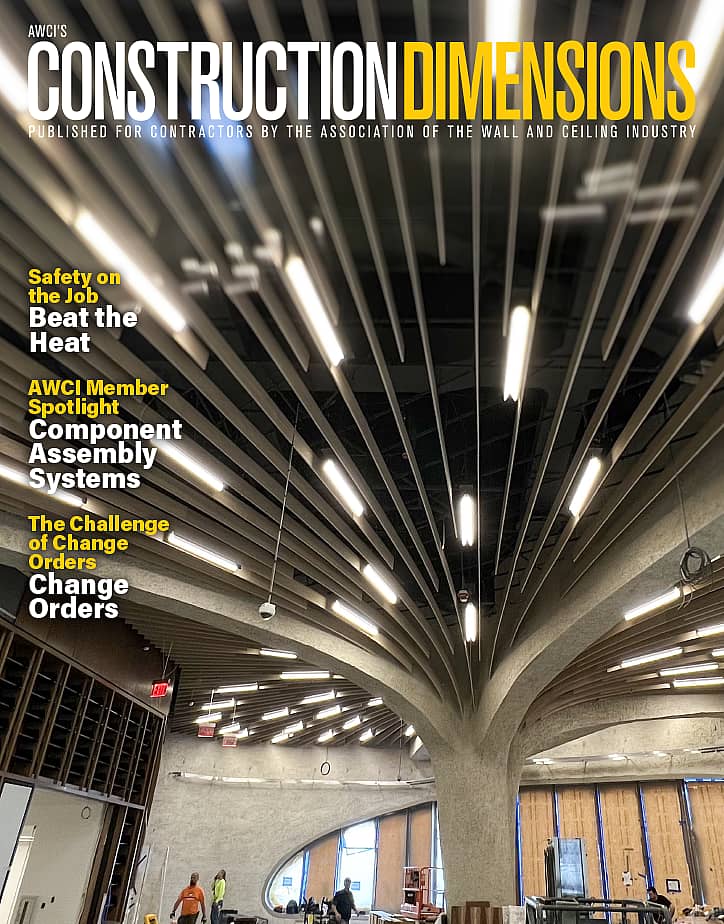Can you explain the new standards for panelized construction?
New standards may soon impact all contractors involved in pre-building panels to be installed on a construction site. Two of these standards, from the International Code Council, are specific to off-site construction. The first one is ICC/MBI 1200, Standard for Off-site Construction: Planning, Design, Fabrication and Assembly, which covers all aspects, from design through installation, of this type of construction. The second is ICC/MBI 1205, Standard for Off-Site Construction: Regulation and Regulatory Compliance. It covers inspection and compliance of off-site construction. Both were a collaboration of the ICC and the Modular Building Institute.
The foreword of 1200 says the scope of both documents covers “componentized, panelized and modularized elements and will not apply to HUD Manufactured Housing.” From a contractor’s perspective, this ranges from wall panels made at a contractor’s location to completely finished bathroom pods used in healthcare facilities. These standards were developed under an ANSI consensus basis and are positioned to be adopted by local jurisdiction.
ICC/MBI 1200 has nine chapters. Individual chapters cover standard definitions, design, the manufacturing facility, fabrication, transportation and installation. In the definitions chapter, off-site construction is defined as “a modular building, modular component or panelized system that is designed and constructed in compliance with this standard and is wholly or in substantial part fabricated or assembled in manufacturing plants for installation—or assembly and installation—on a separate building site and has been manufactured in such a manner that all parts or processes cannot be inspected at the installation site without disassembly, damage to or destruction thereof.”
This could impact the contractor who builds interior or exterior walls, either load or non-loadbearing, with or without finished cladding, at a location different from the actual job site. It can be interpreted the standards could cover pre-assembled ceiling modules including bulkheads that are built not at the construction site. This does not cover the case where contractors pre-assemble wall components at the job site.
Another important definition for the contractor is that of a manufacturing plant. This is seen as the facility where modular components or panels are assembled or manufactured prior to transport to the final construction site. The implication here is that the contractor’s manufacturing plant is subject to inspection by the authority having jurisdiction.
This leads to the contractor having an approved QA/QC plan that would be made available during the inspection process. Part of the plan includes the contractor appointing a person within the firm who will be responsible for administering the plan, and when asked by the inspector, prove his/her expertise and competency in this regard. Proper documentation of the implementation and administration of the plan is essential.
The companion standard, ICC/MBI 1205, Standard for Off-Site Construction: Inspection and Regulatory Compliance, delves into the minimum requirements for the “inspection and regulatory compliance of off-site and modular construction.” The contractor who provides off-site construction in this context is defined as a “manufacturer.” Under ICC/MBI 1205 the manufacturer is required to provide documentation to the AHJ that includes “plans, specifications, calculations, test results, product evaluation reports and critical manufacturer’s instruction and other documentation that describes in detail the product and manufacturing process employed to produce off-site buildings or components.” This means that the contractor should expect higher levels of scrutiny and compliance documentation.
There are specific requirements necessary for compliance programs under ICC/MBI 1205. The AHJ may require a “Compliance Assurance Program” manual. Items in the manual include plant layout down to a station-by-station level, personnel, training procedures for personnel, provisions for an internal quality assurance procedure, and so on, expanding the responsibility of contractors who fabricate panels. Beyond the QA/QC compliance requirements, the standards also covers transportation, storage and installation of panels that are built off-site.
Prefabrication of panels has been in the construction industry for decades, and many drivers have made the practice more prominent today. Along with this growth comes the need to assure that the building elements are code compliant, hence the promulgation of a specific family of standards that set according to ICC/MBI 1200 the “minimum requirements to safeguard the public health, safety and general welfare.” This can be seen as the natural evolution in new technologies and practices. As these practices and products emerge, they reach a point where standardization and regulations are needed to safeguard the public.
A major concern to architects is quality assurance. It is a significant part of their architectural specifications, and is used in their selection of both products and contractors. Therefore, contractors with a working knowledge of these new standards, and the QA/QC that are unique to prefabrication, are in a better position to communicate and market their services to the building industry.
Robert Grupe is AWCI’s director of technical services. Send your questions to [email protected], or call him directly at (703) 538.1611.




